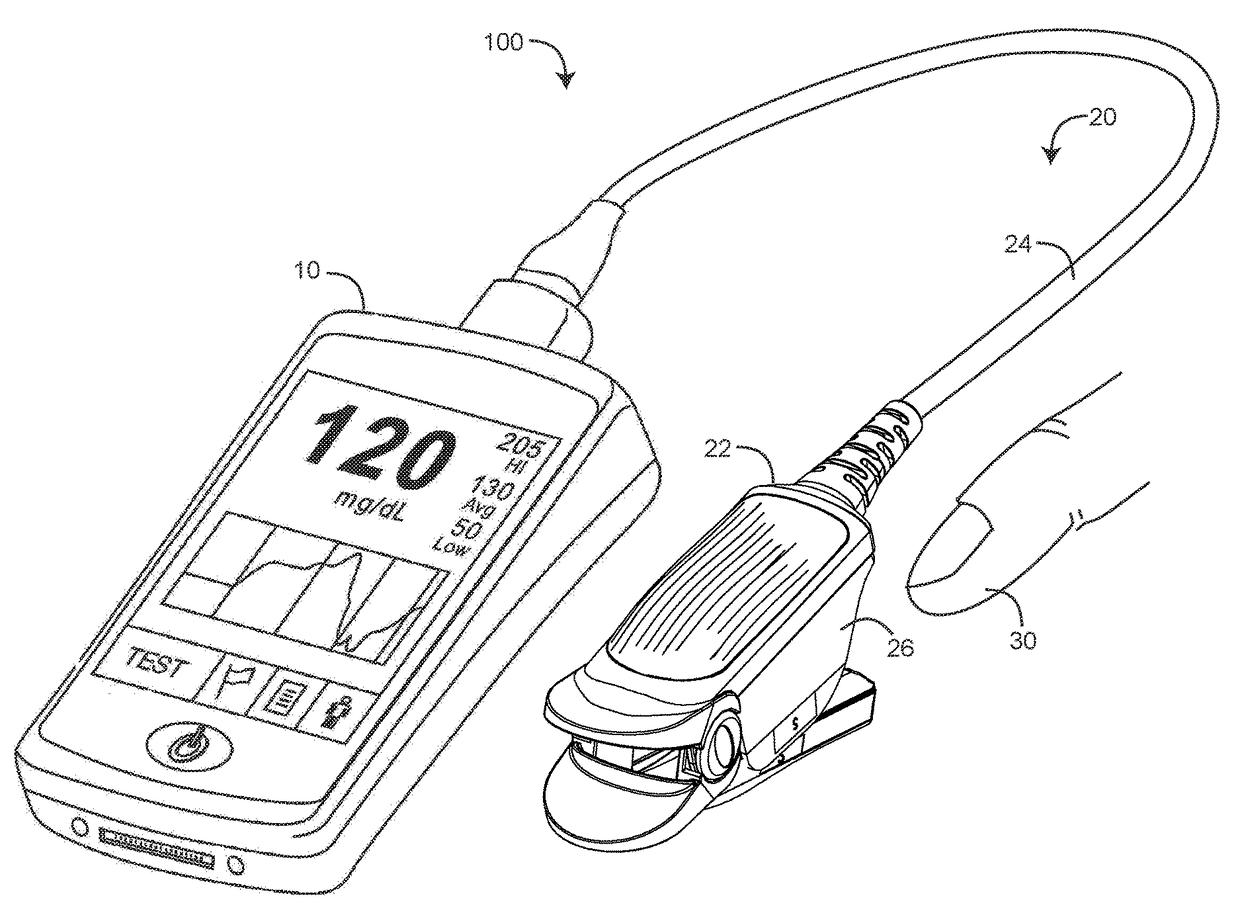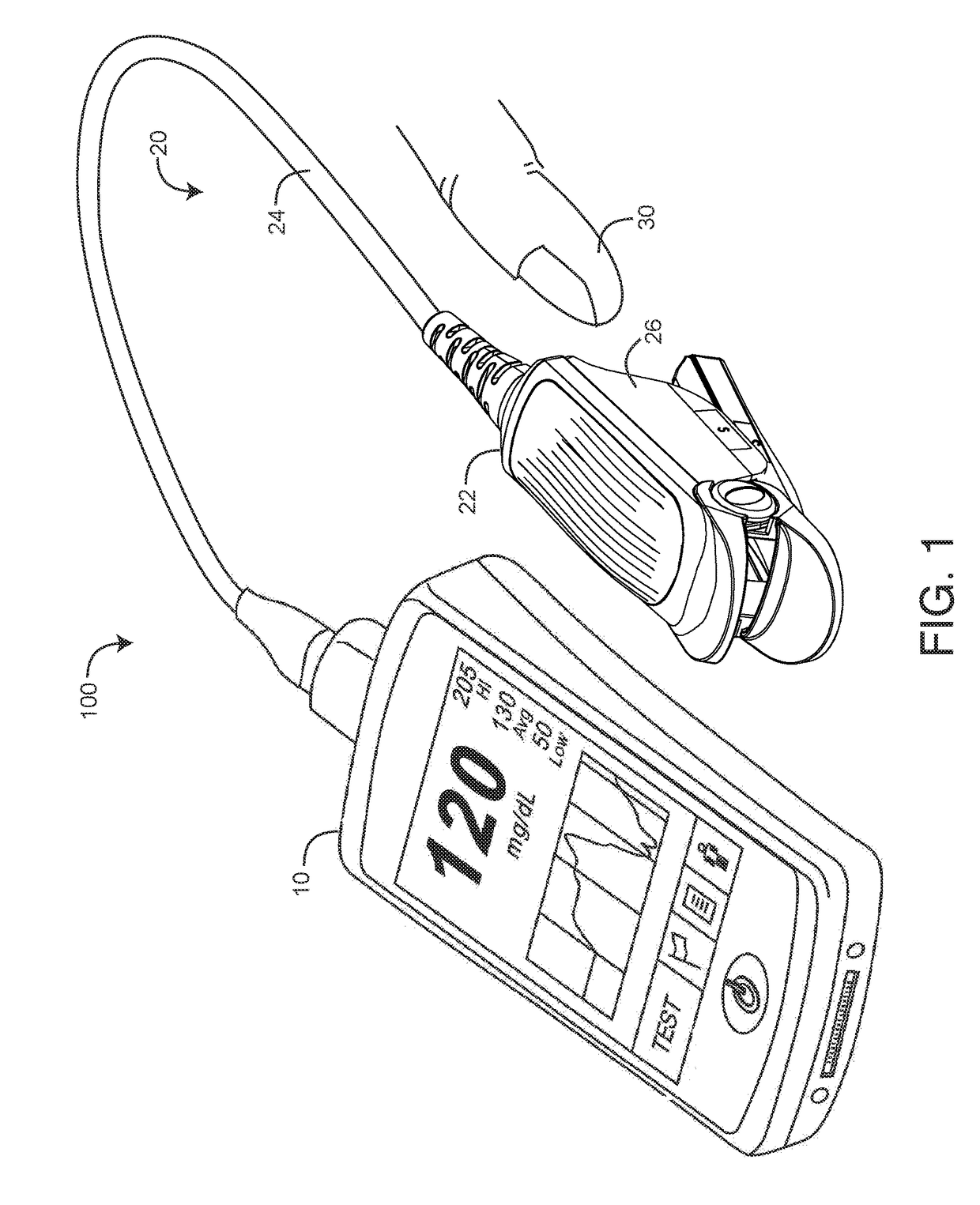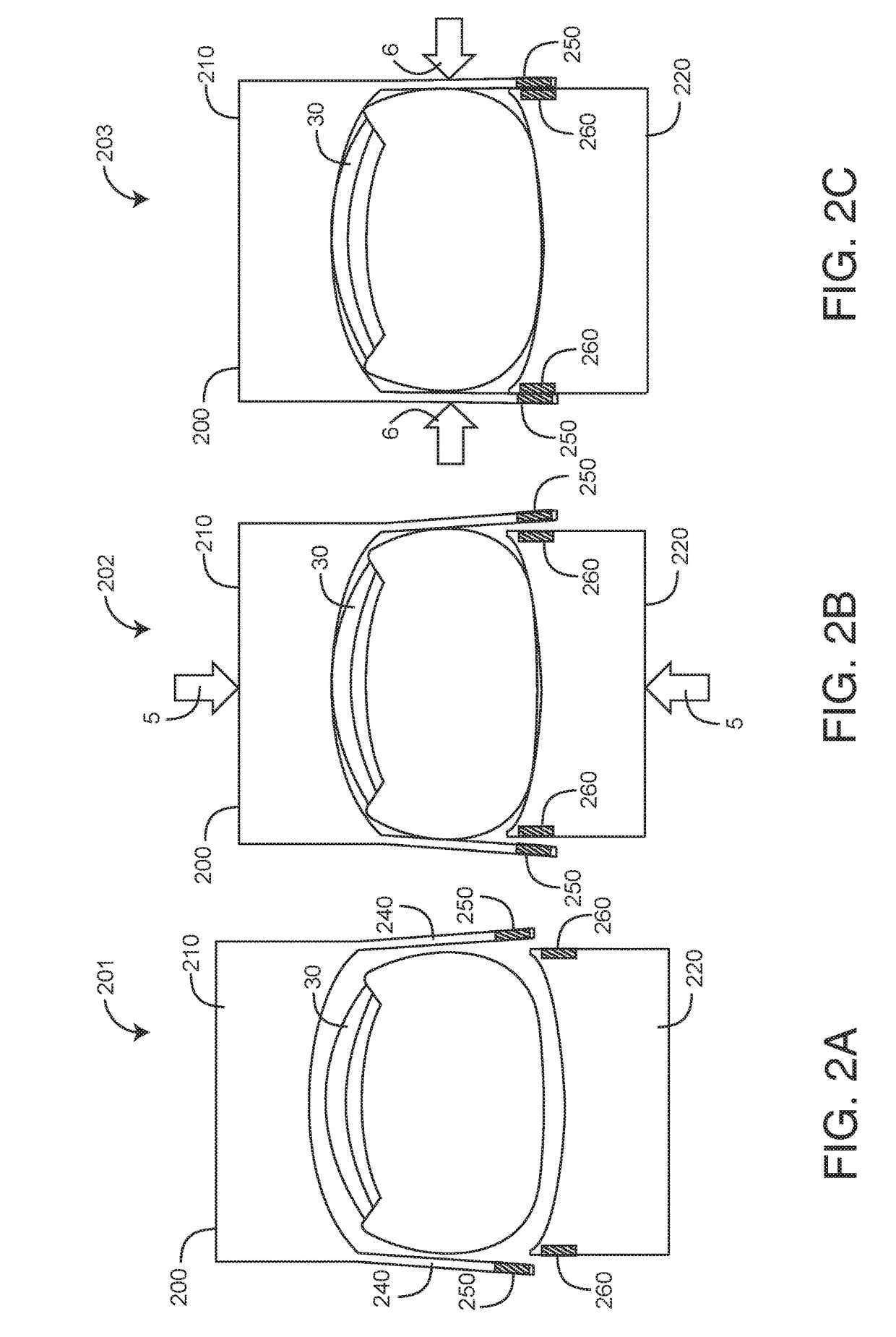Magnetic-flap optical sensor
a technology of optical sensors and magnetic fields, applied in the field of magnetic fields, can solve problems such as errors in conventional pulse oximetry
- Summary
- Abstract
- Description
- Claims
- Application Information
AI Technical Summary
Benefits of technology
Problems solved by technology
Method used
Image
Examples
Embodiment Construction
[0019]FIG. 1 illustrates a noninvasive physiological monitoring assembly 100 having a magnetic flap optical sensor 20 in communications with a multi-parameter monitor 10. The magnetic flap optical sensor 20 is configured to illuminate a fingertip 30 with multiple wavelength optical radiation and detect the optical radiation after attenuation by pulsatile blood flow within the fingertip 30. In an embodiment, the sensor 20 has a reusable finger clip 22 that removably and reusably attaches to the fingertip 30 and a sensor cable 24 that communicates with the monitor 10. Advantageously, the finger clip 22 has magnetic flaps 26 that occlude blood flow within the fingertip 30 so as to accentuate pulsatile blood flow in response to an mechanically-generated “active” pulse. In particular, the magnetic flaps 26 capture a higher blood volume within the fingertip 30 resulting in a larger pulsatile optical signal in response to the active pulse. Magnetic flap fingertip occlusion is described in ...
PUM
 Login to View More
Login to View More Abstract
Description
Claims
Application Information
 Login to View More
Login to View More - R&D
- Intellectual Property
- Life Sciences
- Materials
- Tech Scout
- Unparalleled Data Quality
- Higher Quality Content
- 60% Fewer Hallucinations
Browse by: Latest US Patents, China's latest patents, Technical Efficacy Thesaurus, Application Domain, Technology Topic, Popular Technical Reports.
© 2025 PatSnap. All rights reserved.Legal|Privacy policy|Modern Slavery Act Transparency Statement|Sitemap|About US| Contact US: help@patsnap.com



